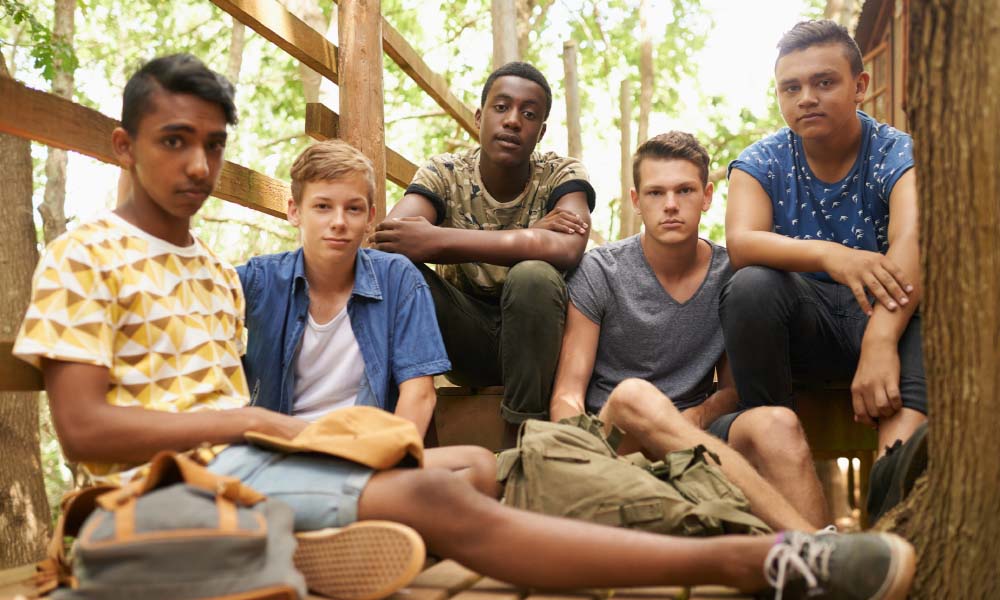As parents, we are put in the position of saying “no” to our children quite frequently. Can I have this toy? No. Can I stay up until two in the morning? No. Can I shave the dog? Um...no.
Most of the time when we say no, it's with good reason. Part of a child’s developmental process is to explore, push boundaries, and indulge. Our role as parents is to protect, educate, and teach our children limits. Those are the dynamics, and the word “no” is a key part of our arsenal.
“No” is a great word! It's concise and unambiguous. Everyone understands it (even dogs). And according to the Oxford English Dictionary, it's the 56th most common word in the English vocabulary. “Yes” didn’t even crack the top 100.
Parents fear the word "yes," as it will surely lead to lack of control and utter chaos. But what would really happen if we used "yes" more frequently? I’m not suggesting we give blanket permission for all requests. Spoiling a child is perhaps the biggest disservice you can do for them.
I'm saying: instead of replying "no" to a particular request, when at all possible, say "yes." Follow up by going over potential consequences of the action with your child. In other words, by slightly changing the way we communicate with our children, we can create opportunities for dialogue, learning, and self reflection. We can also shift the responsibility from the parents as bad guys to natural consequences of choices and behaviors.
For example, if your seven-year-old child asks you to buy him or her that new toy, instead of saying “no” immediately, try saying “yes." Obviously, saying "yes" shouldn’t be the end of the conversation. Think of it as saying, “yes, but…"
For example, you could say something like, “Sure, we could get that toy. I don’t think it's wise to spend the family’s household money, but you can use some of your money to buy it. But do you really want to spend your own money on a toy that you'll probably get tired of in a couple of days?”
Most of the time, the child will problem solve the situation and arrive at the same conclusion you did. Or, your child will buy the toy, grow tired of it in a few days, and realize your observation was correct. When the situation arises again, and the child asks for a toy, apply the same process. Now your kid will have a personal experience to use as context and will think more clearly about the decision. Eventually the child will be more selective about asking for toys, having internalized the process of considering the natural consequences of choices and behaviors.
This strategy has several positive results:
1 | Understanding real life consequences.
When a parent says “no” to a child’s request initially, it ends the process immediately. There's nothing to discuss, and little learning or growth can take place. The situation is over — period. Sometimes, this is the best way to be clear about boundaries and rules. Other times, it's best to turn the request back on the child to find a solution, so the child has ownership in the decision.
It essentially turns him or her from an underpaid employee, who must only do what he or she is told, into an executive with decision-making power, responsible for the outcome. Pros and cons must be weighed, variables considered, and a willingness to accept consequences. Parents obviously have the final say, but this way of responding to requests gives the child some autonomy, or at least an illusion of autonomy.
“Helicopter parenting” is frowned upon to a degree because it robs children of any decision making. As children get older, their abilities to make mature, informed decisions are less effective because they've never had the opportunity to practice. As parents, we don't want to see our children suffer any consequences when we can help them avoid the consequences. We tend to insert ourselves in the dynamic to protect them.
2 | Internalizing decision-making.
Connected to the concept of understanding real life consequences is the development of internal decision-making. As described above, when the parent becomes a buffer to any real life consequences, there's little opportunity for the child to learn and grow. They become stagnant and dependent.
When a child becomes an active participant in the process and is allowed to reap the benefits, or the consequences, of their decision, then real learning takes place. This learning and maturity is essential when children become teens and young adults, and are faced with many choices. It's far better for them to make choices – even poor choices – when they're younger, as the consequences are less severe.
3 | Improvement of parent/child relationship.
More often than not, when a parent is put in a situation to say “no” to their child, the child will be upset with the parent. They view the parent as the impediment to their desire. If kids take part in the decision-making process, they're more likely to feel ownership of the decision, and the outcome.
The parent is seen less as a barrier and more as a partner (at least in this particular equation). It can ease tension, increasing trust and communication. The child will begin to understand that the variables and outcomes may be what's against them, not the parent.
4 | Responsibility.
Saying “yes” may seem like it'd create a spoiled child. But keep in mind, the idea behind the strategy is to be creative in allowing the child to be the one to say “no” to a situation. As parents, it hurts when our children suffer consequences and sometimes we assume any burden we can. We create a buffer to the real world consequences, and hinder the internalization of decision- making. So in any “yes, but…” situation, it's essential for the child to own the process and outcomes. This teaches responsibility at an early age, avoiding the creation of a spoiled and entitled adult.
5 | Positive discipline.
Taking this strategy one step further creates positive discipline for children. In creating and enforcing rules, the parent works with the child on predetermined consequences for any behavior. The consequences are already in place and agreed upon. The parent has taken himself or herself out of the equation, and it's the responsibility of the child to make the decision and handle the consequences.
In my former job as a supervisor, I had to let a few employees go over the years for poor performance. My then-eight-year-old son asked me one day how many people I'd fired. My answer to him was zero. I explained that I held people accountable.
It was my way of illustrating that people of all ages have choices and that natural consequences are a part of life. By limiting the use of the word “no" and saying "yes" more often, our children will grow into responsible teens and adults. And you, the parent, will find yourself enjoying an improved relationship with your child.


